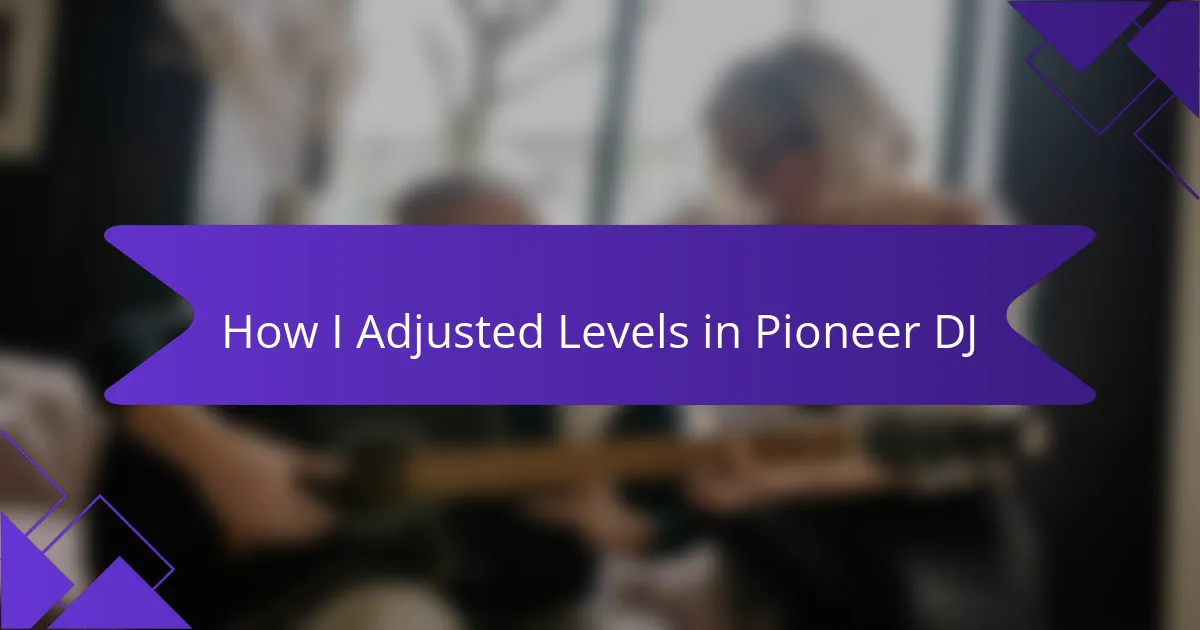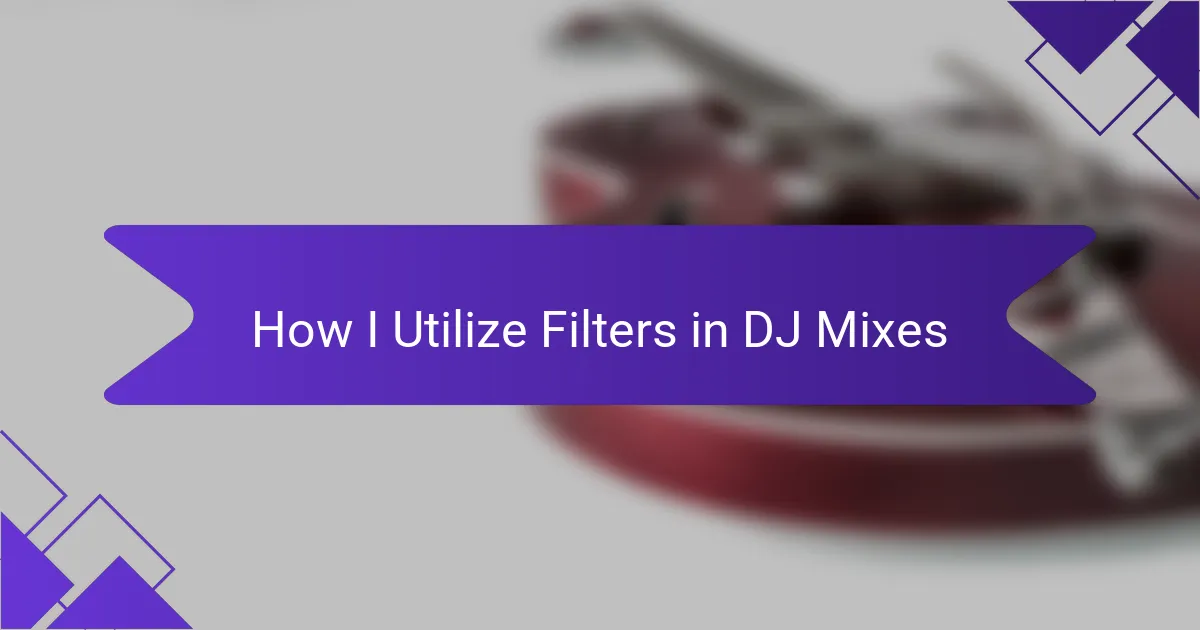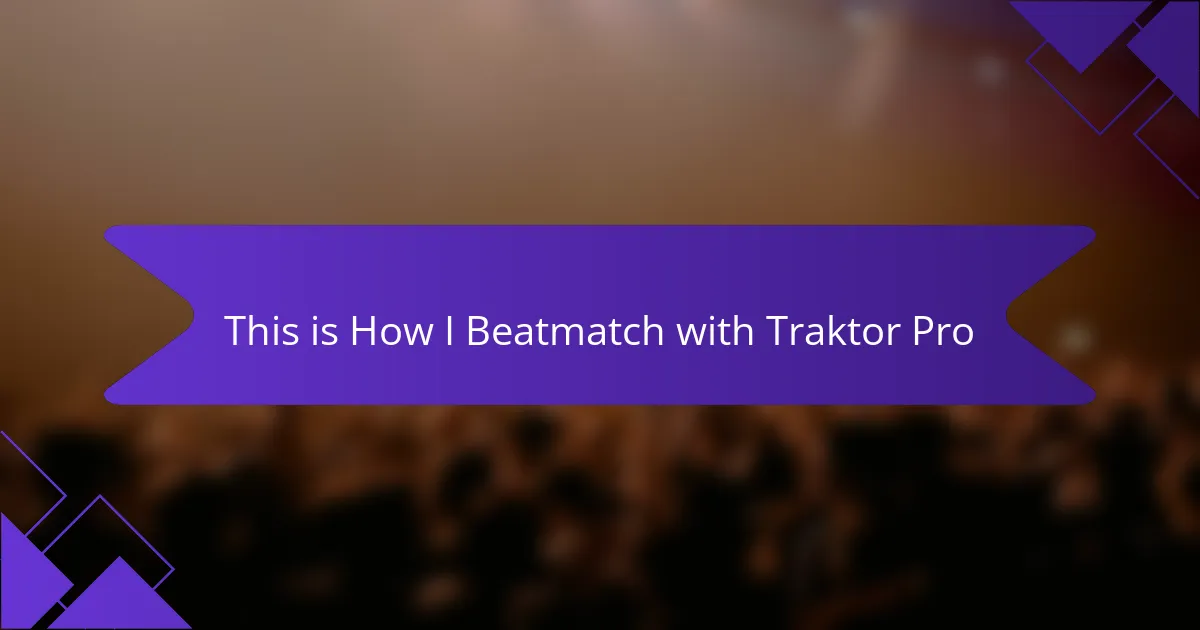Key takeaways
- Sampling enriches music production and DJing by allowing creative expression and emotional connections with listeners.
- Effective techniques include slicing and chopping samples, which can transform sounds into unique rhythms and melodies.
- Using diverse sources like Splice, Loopmasters, and vinyl digging can inspire creativity and elevate tracks.
- Experimentation with effects and layering enhances sound depth, making tracks more engaging and impactful.
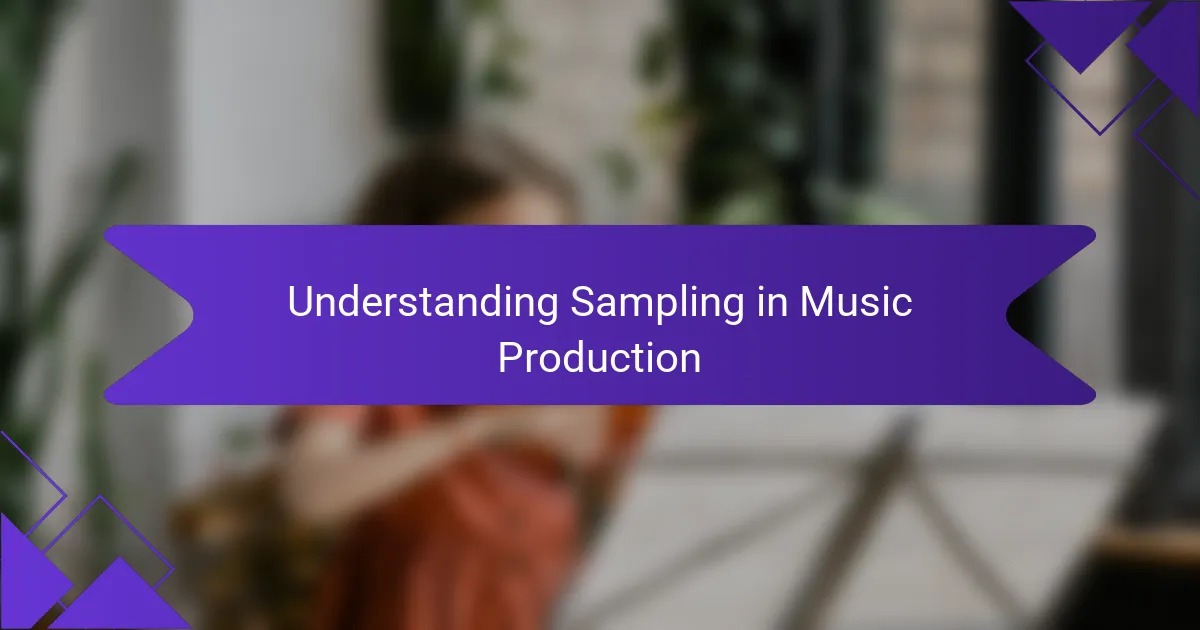
Understanding Sampling in Music Production
Sampling in music production is a fascinating and powerful tool. It allows producers like myself to breathe new life into existing sounds, transforming them into something entirely unique. I remember the first time I sampled an old vinyl record; it felt almost magical to manipulate and create something fresh from a piece of history.
When I work in FL Studio, I find the sampling process incredibly intuitive. The ability to chop, pitch shift, and layer samples makes the possibilities endless. Here are some key points to consider about sampling in music production:
- Sampling can provide a rich texture and depth to your tracks.
- You can blend different genres by incorporating diverse sounds.
- It’s essential to clear samples to avoid copyright issues unless you’re using royalty-free options.
- Experimenting with various effects on samples can yield unexpected and delightful results.
- Sampling can evoke nostalgia by connecting listeners to familiar sounds, creating an emotional impact.
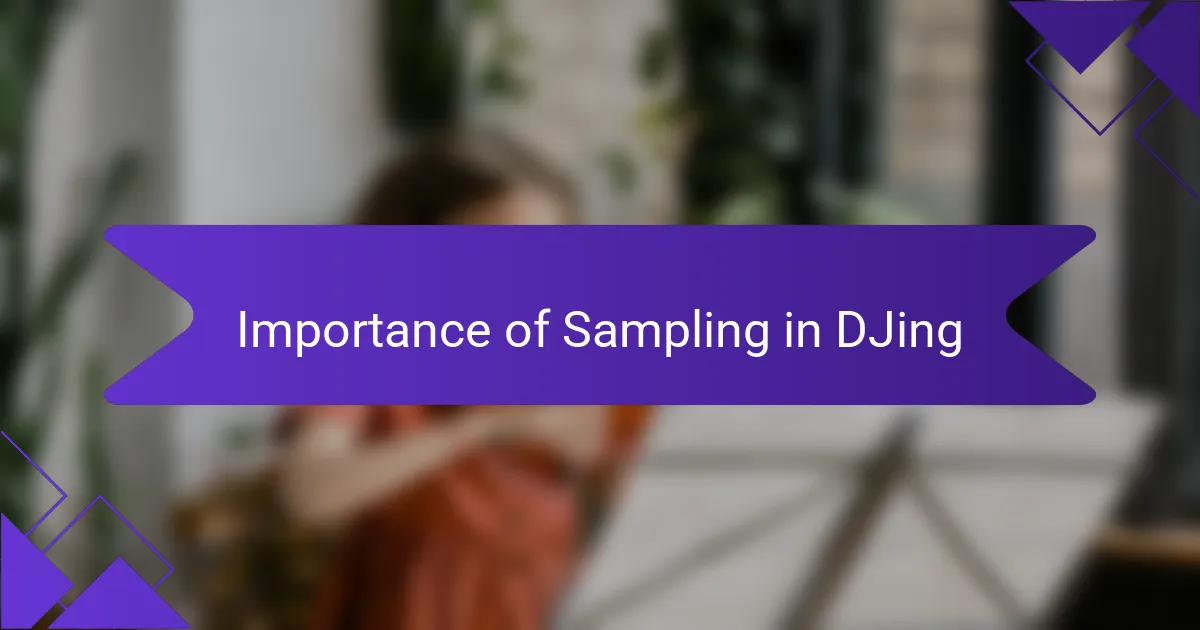
Importance of Sampling in DJing
Sampling plays a crucial role in DJing because it allows for creative expression and genre-blending. I’ve often found that when I incorporate samples from different styles—like jazz or funk—it not only elevates my sets but also bridges gaps between audiences. Have you ever noticed how a familiar riff can instantly ignite a crowd? That’s the power of sampling at work.
Moreover, sampling can completely alter the vibe of a track, giving it a fresh perspective. I once dropped a classic pop sample in a techno set, and the dancefloor lit up as people recognized the iconic sound. It’s moments like that which emphasize how sampling can create unexpected connections, turning a good set into an unforgettable experience.
In my experience, the emotional weight of a sample can resonate deeply with listeners. When I sample a nostalgic melody from my youth, it feels like I’m inviting the audience on a personal journey. It’s amazing how one sound can evoke memories and feelings, making my performance not just about the music, but also about the shared experience. Wouldn’t you agree that’s what makes DJing so powerful?
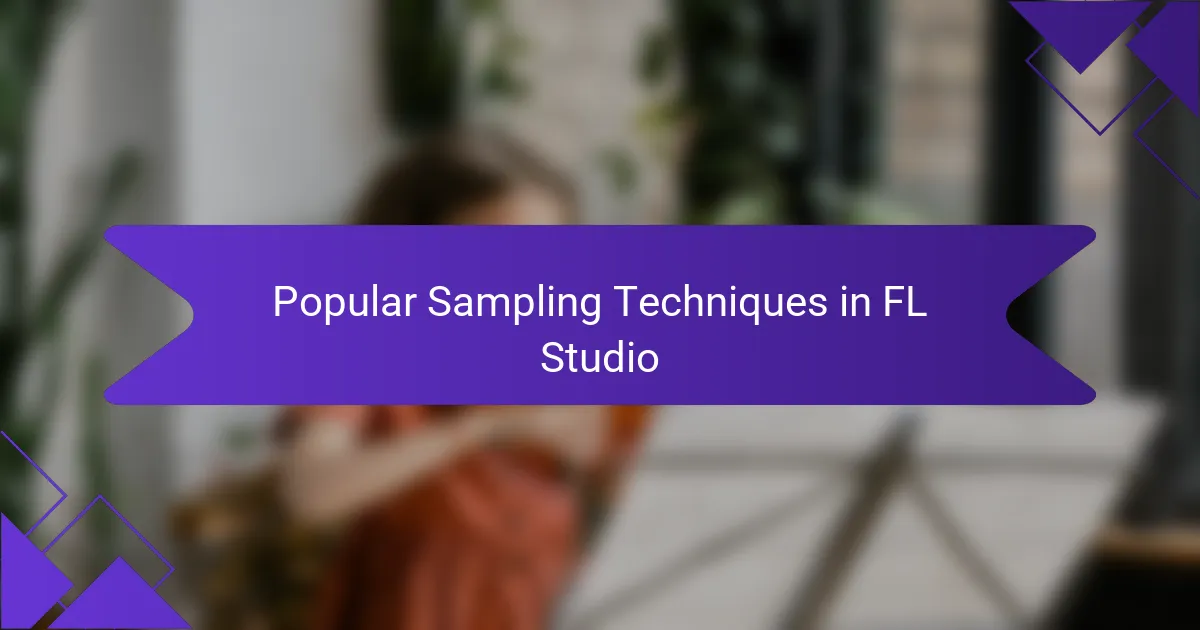
Popular Sampling Techniques in FL Studio
When it comes to sampling in FL Studio, I’ve found that two standout techniques really enhance creativity and production quality: slicing and chopping samples. Slicing allows you to dissect a sound into smaller, playable segments. This method gives me room to rearrange elements creatively, resulting in a fresh take on a sample I thought I knew.
On the other hand, chopping involves taking snippets of a sample and rearranging them in a new order. This technique can completely transform the sound, offering unique rhythmic patterns. Personally, I’ve often been amazed at how a simple chop can turn an ordinary sample into something extraordinary. Each approach brings its own flavor, making it essential to experiment and find what resonates with your style.
Here’s how I see these techniques compared:
| Technique | Description |
|---|---|
| Slicing | Decomposes a sample into small segments for flexibility in arrangement. |
| Chopping | Reorders snippets of a sample to create new rhythmic structures. |
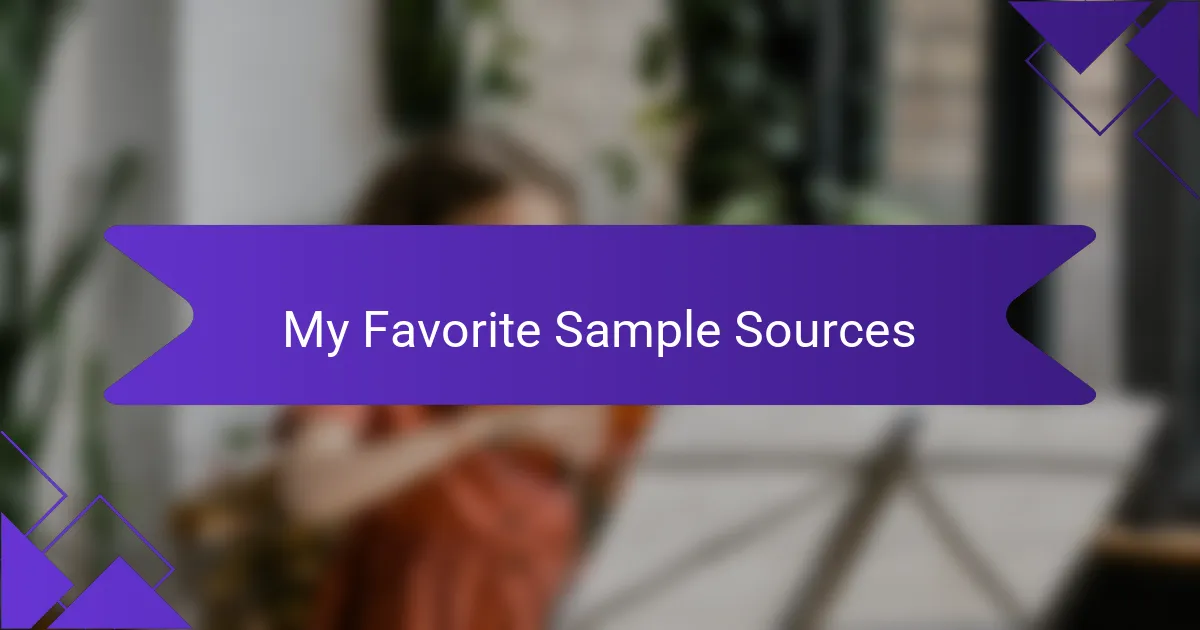
My Favorite Sample Sources
When it comes to finding samples, I have my go-to sources that consistently inspire me. Splice is a personal favorite; its extensive library never fails to spark creativity. I remember stumbling across a unique vocal chop that ended up being the centerpiece of a track I produced. It’s moments like that which make my sampling journey so rewarding.
Another source I rely on is Loopmasters. Their curated sample packs cover a wide range of genres, which makes it easy to find exactly what I need. I once created a high-energy house track using a drum loop from one of their packs, and the energy it brought to my set was unmatched. There’s something special about using well-crafted samples that can elevate a track to the next level.
Lastly, I find a lot of joy in crate digging for vinyl samples. There’s a certain thrill in unearthing a record that contains hidden gems. I often find myself lost in the rhythm and mood of old records, and it brings a nostalgic feel to my music that digital sources just can’t replicate.
| Sample Source | Key Features |
|---|---|
| Splice | Extensive library, subscription model, unique samples |
| Loopmasters | Curated packs, genre diversity, high-quality sounds |
| Vinyl Crate Digging | Unique, nostalgic samples, tactile experience |
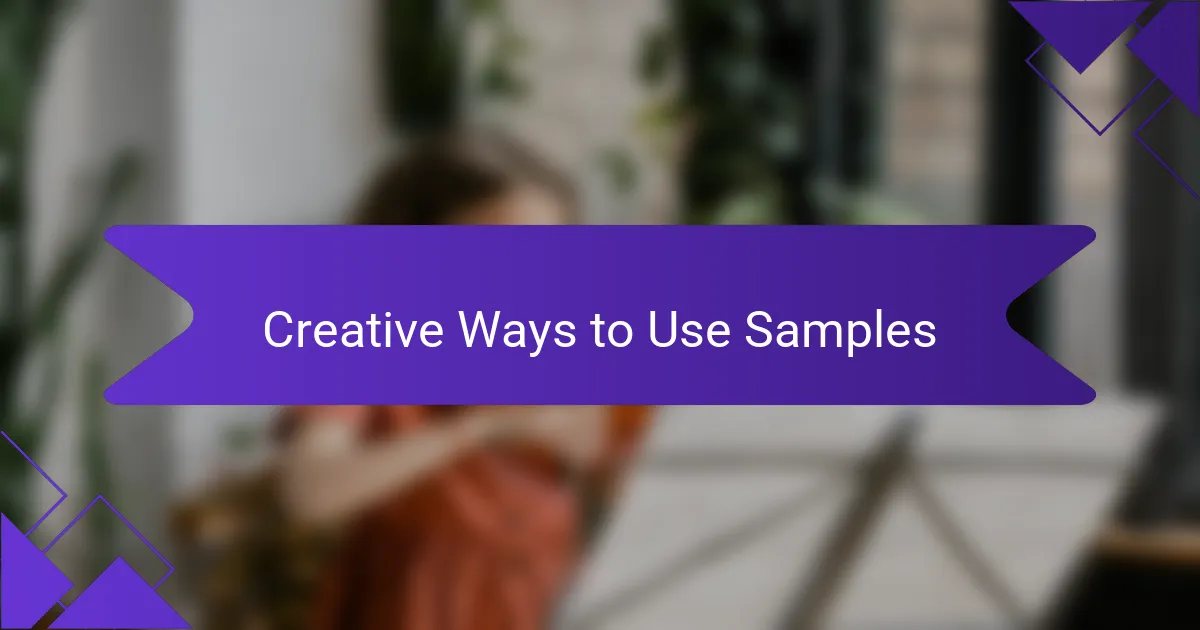
Creative Ways to Use Samples
Sampling in FL Studio can really boost creativity. One technique I love is chopping samples. It allows me to create unique rhythms. I often take a vocal snippet and slice it up, rearranging the pieces to form a completely different melody. It’s like giving an old sound a fresh life.
Another exciting method is layering samples. When I combine different sounds, it creates a rich texture that captivates listeners. For instance, I might layer a synth pad with a percussive element to set a dreamy yet driving atmosphere. This technique has transformed my tracks, adding depth and character.
Lastly, manipulating samples through effects like reverb and delay opens up endless possibilities. I remember experimenting with a simple drum loop by applying glitch effects, and it totally changed the vibe. It’s fascinating how a little adjustment here and there can evoke strong emotions in a track.
| Sampling Technique | Description |
|---|---|
| Chopping | Rearranging slices of a sample to create new rhythms or melodies. |
| Layering | Combining multiple samples to create a fuller, richer sound. |
| Manipulation | Using effects like reverb and delay to transform a sample’s sound. |
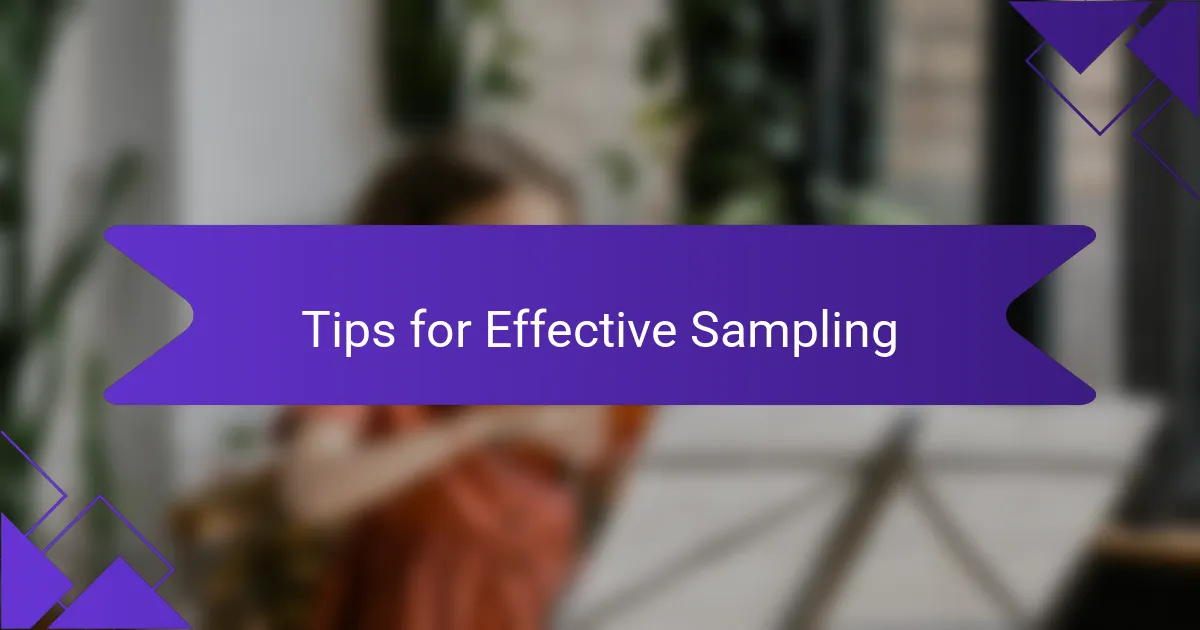
Tips for Effective Sampling
When it comes to effective sampling in FL Studio, I’ve found that context is everything. It’s not just about selecting a sound; it’s about how that sound fits into the broader composition. I remember working on a track where I used a vocal sample that seemed out of place initially. But after adjusting its pitch and adding some reverb, it transformed the entire vibe. It taught me that experimentation is key—sometimes, what doesn’t fit at first can become the centerpiece of your track.
Here are some tips I’ve gathered over the years to make your sampling process smoother and more impactful:
- Layering Sounds: Combine samples with different textures to create a fuller sound.
- Chop and Edit: Don’t hesitate to slice samples into smaller pieces; this can yield unique rhythms and variations.
- Use Effects: Experiment with reverb, delay, and EQ to help your samples sit well in the mix.
- Stay Organized: Label your samples and keep them in folders for quick access; it saves time during the creative process.
- Don’t Overdo It: Less can often be more; a well-placed sample can speak louder than many.
By applying these tips, I’ve noticed more depth and character in my tracks, and I believe you will too.
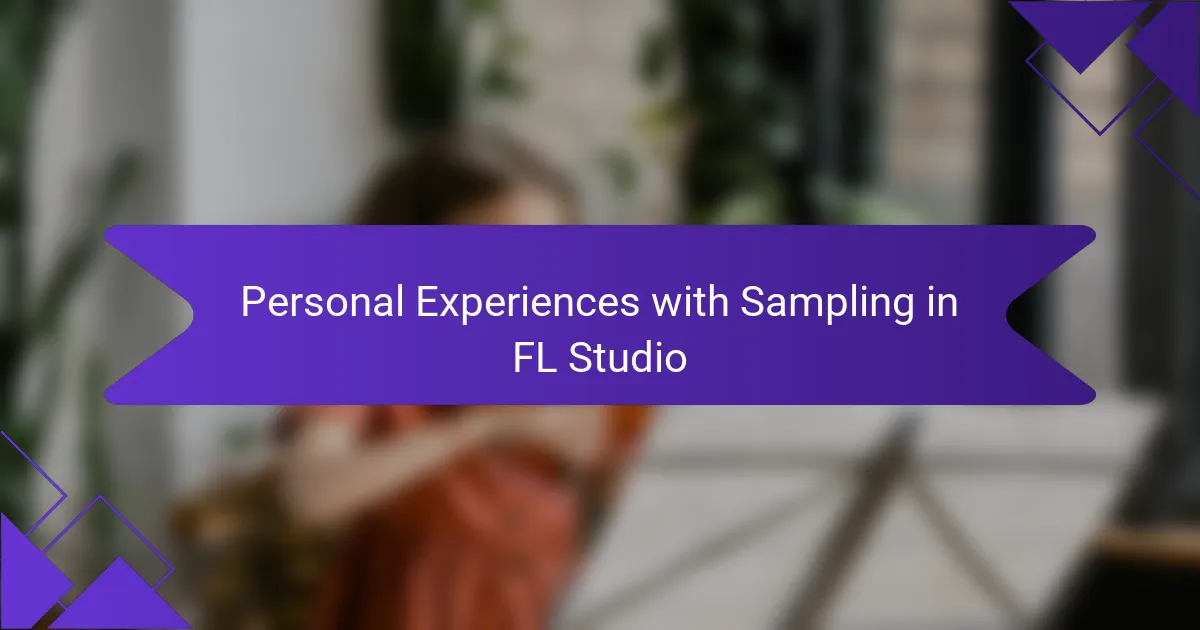
Personal Experiences with Sampling in FL Studio
When I first started using FL Studio, sampling felt like a daunting task. I remember spending hours digging through old vinyl and sound libraries, excited to find the perfect sound. The thrill of transforming these samples into something uniquely mine has been incredibly rewarding.
One of my favorite experiences was when I sampled a vocal clip from a classic jazz record. It was amazing to see how I could manipulate it—pitch-shifting and applying effects completely changed the feel of the track. Moments like that remind me of the endless possibilities within sampling, making it a crucial part of my creative process.
FL Studio makes it easy to experiment with different samples, and I’ve learned that the right sample can elevate a track from ordinary to extraordinary. The software’s workflow has become second nature to me, allowing me to focus on my creativity rather than technicalities.
| Aspect | My Experience |
|---|---|
| Initial Learning Curve | Challenging but rewarding |
| Creative Freedom | High, allows for unique sound creation |
| Sample Manipulation | Fun and transformative, enhances tracks |
| Software Workflow | Intuitive and streamlined |
